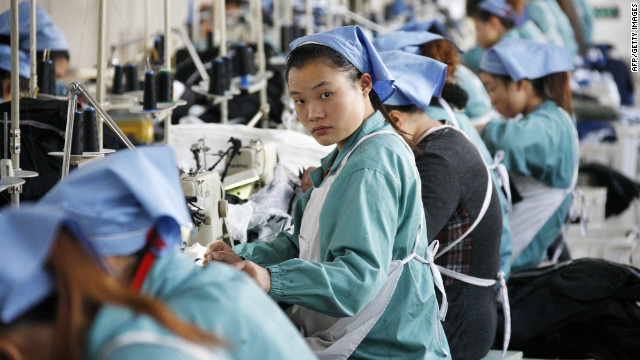|
The lobby of the Hodo clothing factory is airy and spacious, with a lone receptionist looking slightly lost in front of a vast backdrop in the company's trademark colour, red. Hodo's parent company, the industrial conglomerate Hongdou, employs 20,000 people in sectors ranging from property to pharmaceuticals, but textiles made up more than half of the group's revenue of 20.7 billion yuan (Dh11.12bn) last year. The company makes 160 million garments each year, ranking it second in the sector in China, and Zhou Haijiang, its chief executive, last year placed 188th in Forbes.com??s list of the 400 richest Chinese, with his and his family's net worth estimated at US$295 million (Dh1.08bn). Conditions on the factory floor, though frenetic, are far from the Chinese sweatshop cliche, perhaps explaining why this site is chosen for official tours by overseas visitors. The equipment is Japanese, noise levels are modest and the workers, most of them in red T-shirts, are spaced well apart. Notable successes have been achieved in developing new kinds of materials, such as low-static clothing, says Jianmao Wang, a professor of economics at the China Europe Business School in Shanghai.
According to Dr Jagjit Singh Srai, the head of the University of Cambridge's Centre for International Manufacturing, "the days of mass contract manufacturing with no value added are probably numbered".
Hongdou has put a lot of work into establishing itself as a top-end manufacturer. It has commissioned French designers, set up a training centre with the French fashion school Esmod and developed more expensive brands such as Hetinne, which makes shirts that retail for about $20 in the company's dedicated stores, significantly more than most Chinese-made shirts. Hetinne goods, which also include ladies' clothing and handbags, are sold in separate stores from those of Hodo.
It is a far cry from 30 years ago when China, still recovering from Mao Zedong's cultural revolution, barely had any such thing as fashion. The drab Maoist jacket was practically required wearing.
"If you look at so many brands today, whether western or Asian, almost everything we're wearing is made in China," says Denis Ravizza, who regularly visited makers in China as an art director for the clothing and cosmetics maker Esprit. "Many, many famous brands are made there." China has long since established a reputation for being able to produce quality textiles at a fraction of the cost European or North American suppliers would charge.
"There is serious and intensive quality control that has to be made, but Chinese manufacturers are totally capable of making high-standard garments,"says Mr Ravizza, who now works as the art director and associate dean at the Dubai branch of Esmod. While China has had extraordinary success as a textile exporter, it has a modest profile internationally when it comes to its own premium clothing brands.
Just 10 per cent of Hongdou's clothing production goes overseas, according to Wang Zhuqian, the company spokeswoman. Though Hongdou, which traces its history back to 1957, has registered its name as a trademark in dozens of countries, its popularity remains concentrated in its vast home market. "The design is very interesting. It's a mix between western and Chinese," said Mr Ravizza when describing the company's style."They use silk and velvet with a touch of the whimsical." But given the size of the textile industry in the country, some still believe the number of globally recognised Chinese clothing brands to have extended their reach beyond the region will remain modest. "The European designers are more sophisticated. If they are selling to the Chinese market they will be more successful." |
|
Chinese textile sector looks to extend reach
Updated: 2009-10-20 Source: Thenational

Recommended News
Photo Gallery
Most Popular



